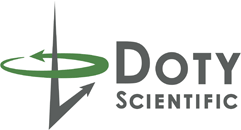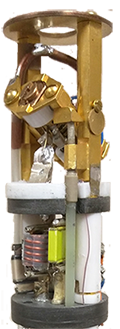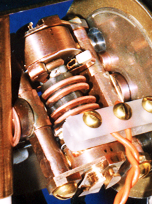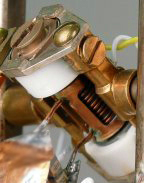Doty No-E H/X/Y BioSolids Probes
Low E since 1997
- Ultra-Low E fields
- H/X/Y Bio-Solids to 1300 MHz
- Double Broad-Band
- Standard package includes: Triple-tune 1H/13C/15N and 1H/31P/13C plus Double-tune 1H with 31P, 23Na, 13C,29Si, 2H, 17O, 15N, 14N
- Wide Bore or Narrow Bore probes
- Silicon nitride rotors for lowest thermal gradients
- For solids, semi-solids, or lossy liquid samples
A little history: Doty Scientific was the first to introduce Low-E probes. (This, among other things, allowed researchers to study biological samples without “cooking” their samples with high decoupling.)
In 1997 the Doty XC5 was introduced with a low-E cross coil for the 1H high frequency positioned on the coil-form near the sample, while a solenoid coil was mounted on the outside for the low frequency rf channels. This probe, which reduced decoupler heating by more than an order of magnitude, was soon followed with other sample sizes to over 900 MHz.
Later, the Bmax probe was introduced with an inner solenoid and an outer Doty-Entzminger (DE) resonator for 1H. This improves S/N on the LF channels, though with some compromise on 1H efficiency. The photo below on the right illustrates the version that is normally used up to 600 MHz. For higher fields, segmenting capacitors are inserted into the lower bands on the coil. This further reduces decoupler heating, as now there really is essentially zero E field at the 1H frequency throughout most of the sample. Simulations show it works to at least 1200 MHz even with 4-mm rotors.




